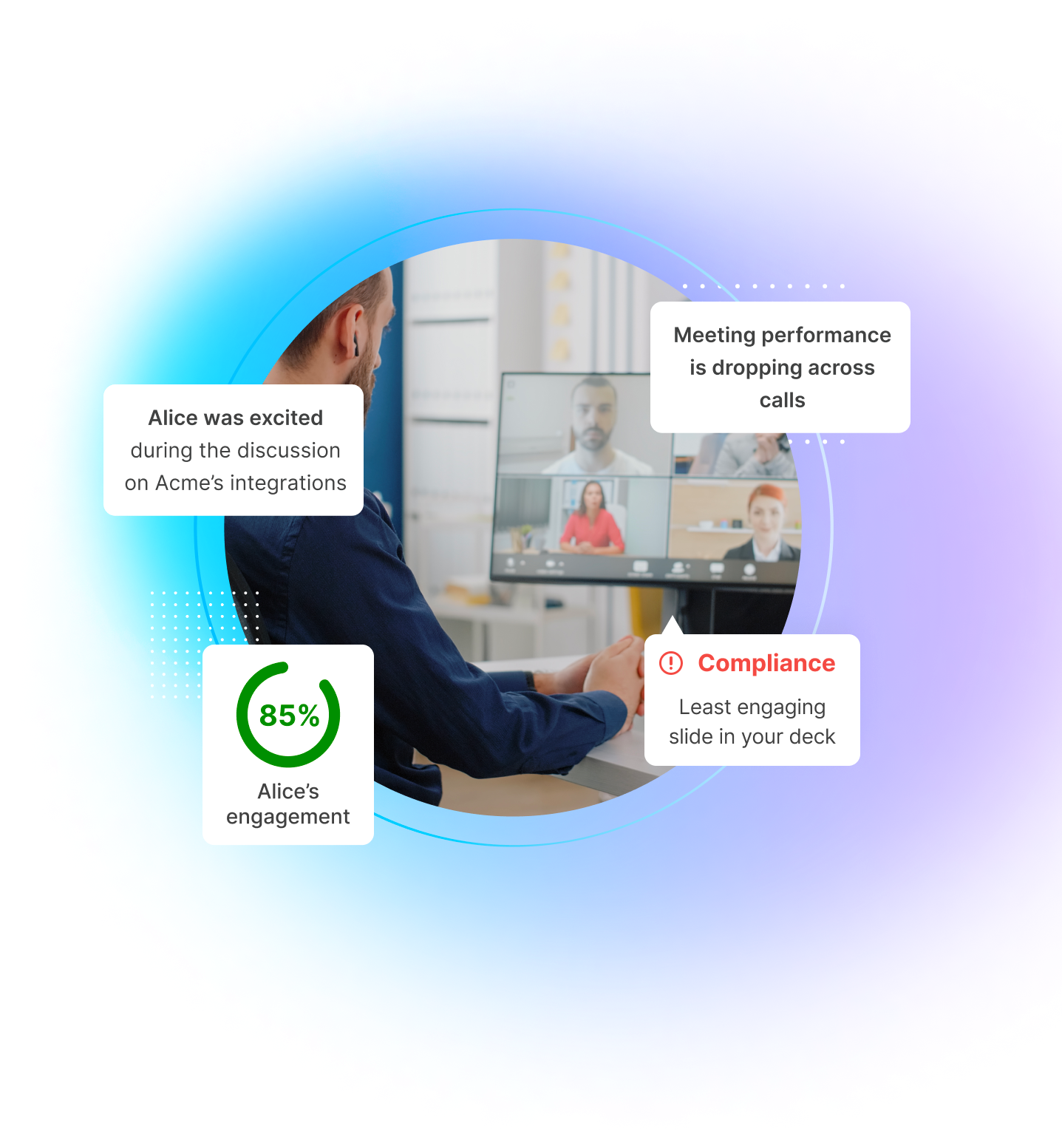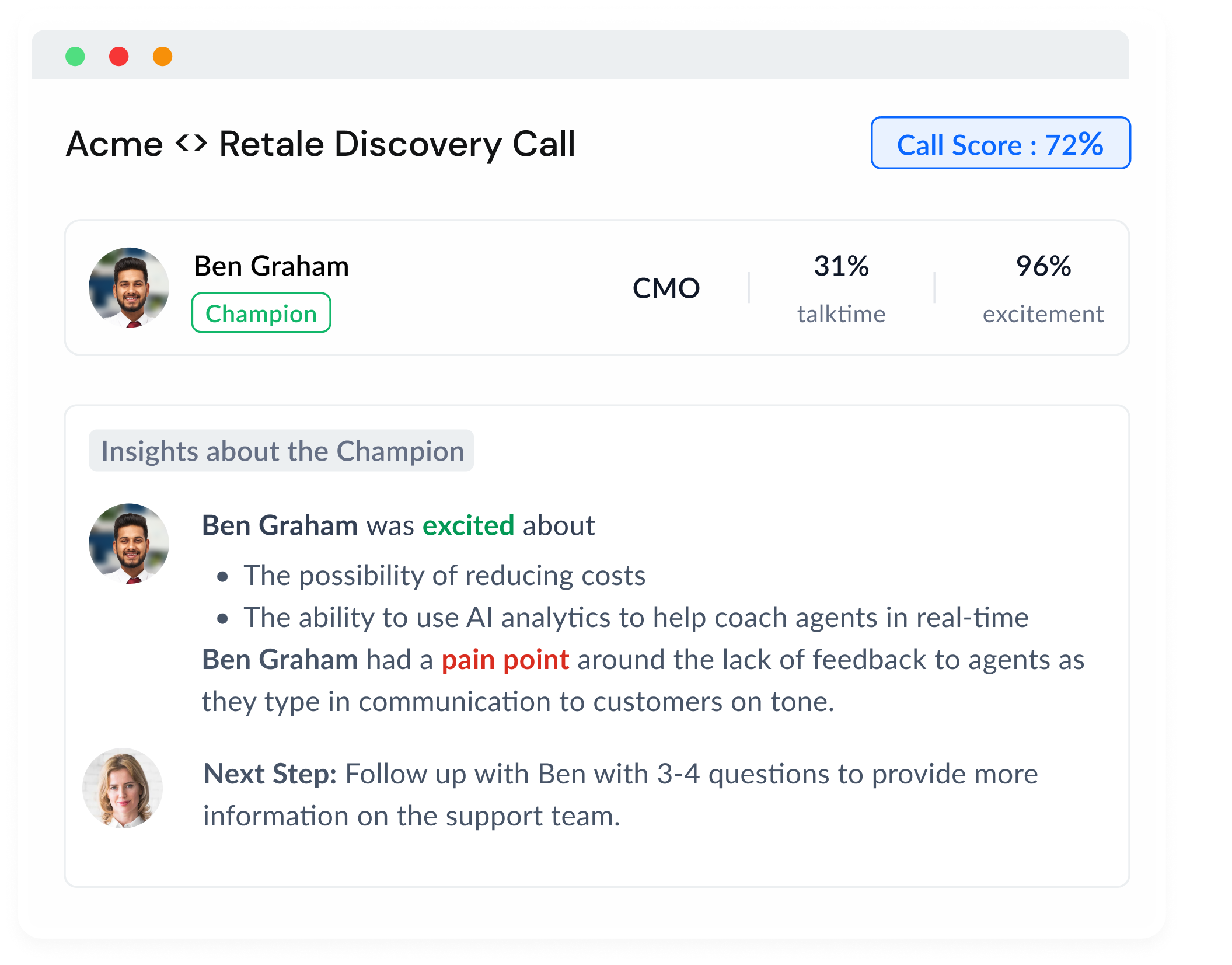In today's digital-first sales landscape, call demos have become an invaluable tool. This real-time, tailored approach allows professionals to visually present solutions over the phone or video, effectively bridging the gap between convenience and personalization. Yet, despite these advancements, a startling statistic stands out.
Only 13% of customers believe sales professionals truly understand their needs. This underscores a crucial point: sales teams need to refine their demo techniques.
A successful sales presentation or product demo call has clear objectives:
- Your prospect should visualize how your solution addresses their problem.
- They need to grasp how it integrates with their business context, including internal stakeholders, constraints, and tech stack.
Now, let's delve into five sales demo tips that promise to elevate your closing rates.
Tip 1: Notice the smaller details to understand buyer interests
Every sales professional worth their salt knows that the prospective customer's pain points are the crux of a good sales demo. But these pain points are not always rational.
Someone buying a productivity tool is not just looking to address time management. They also want to help themselves feel good about getting stuff done.
There are similar emotional triggers and barriers that you can unearth by reading your prospect’s words as well as body language. In your discovery calls ahead of the demo, you want to hear not just what’s said but also what your prospect leaves unsaid.
Just because a customer doesn’t verbally express a pain point or a disagreement, it doesn’t mean that it doesn’t exist.
Tip 2: Prepare with previous sales calls as your navigation map
No two demo calls are ever the same. Each prospect requires a varied level of preparation and a personalized demo and pitch. That is why even seasoned sales professionals must go through the exercise of studying past calls to identify effective talking points.
Winging it is just not an option in sales. Reviewing past sales calls will add substance to your preparation and help you replicate winning behaviors. You will also learn the nuances of your own product and how it fixes every prospect’s specific pain points.
Tip 3: Customize your demo for every prospect
Each prospect requires different things, even if the product you pitch to them is the same. Naturally, you need to have a clear idea of who you are talking to, and how you can solve their problems.
Having templates for your slide decks is a good idea, but that’s precisely what they are - templates. You need to customize them according to each customer's business context, needs, and pain points. The same goes for sales demos - the flow might be the same, but you should focus more on areas that are most relevant to your prospect's business needs.
Sometimes, you are selling to a committee of decision-makers. And you often will because statistics show that even in typical companies with 100-500 employees, at least 7 are involved in buying decisions. Understand everyone’s triggers and barriers and ensure your demo speaks to each decision-maker.
The language you speak in your demo calls is also critical. Be sure to include your prospect’s industry- and company-specific terminology.
Simply put, speak your prospect’s language in your conversation and in your slides. This is crucial because you want to reduce the time and effort it takes for a customer to understand the features and benefits of your product.
Your choice of words should make it easy for your prospect to imagine being your customer.
Show how your product fits within their current operations and what results it can produce. Use case studies and testimonials relevant to the prospect to show that your product has already delivered results for others like them.
Your prospect won’t just take your word for it - empower your demo with hard data and social proof.
Tip 4: Support (don’t replace) your pitch with a demo script
In 'The Office', Michael Scott becomes a telesales representative to earn extra money. His boss comes hard on him for trying to connect with the customer emotionally instead of sticking to the script. Michael believed in establishing a relationship with the customer instead of rattling off a monologue about the product. And we’ll tell you this - Michael was right!
Yes, your demo script should include product or service features and enough time for Q&A. It should provide structure to your call and act as a blueprint.
But its only purpose is to help you navigate the conversation, not to replace it.

You will miss important cues if you are focused on getting to the next line in your script or pigeon-holing the customer’s agenda into your solutions. Are they losing interest? Are these benefits making them excited? You’ll never know.
Your script is the skeleton. The meat comes from engaging with the prospect and adjusting the conversation according to their inputs and responses over time.
Tip 5: Don’t let your prospect forget you after that one call
Your sales demo went well.
You have turned a cold prospect into a warm lead.
You feel like you have done everything you could to close the deal.
But, no, you haven’t.
80% of sales require at least five instances of follow-up communication, so you still have work to do:
- Recap action items from the call and go over the questions you answered.
- Provide a crisp call to action for the next steps - that could be booking another call, reading a blog related to a particular problem that the prospect brought up, downloading a whitepaper, or kicking off a trial period.
Crisp and concise follow-up communication with one clear CTA will nudge your prospect without overwhelming them. Use your follow-up emails as an opportunity to establish synergy with relatable content or consultation.
1000s of demo calls. 5 strategies. And one tool that does it all.
Sales demos can be hard work. Harder if you want to get them right with customization and continuous learning. But you no longer have to go it alone.
Tailor your demo approach for each prospect with Sybill’s:
- Keyword analysis and observations on non-verbal cues;
- Slide scoring to help you choose slides that resonate with prospects and drop the ones that don’t;
- Concise call highlights to provide you with a list of action items and follow-up content in just five minutes.
Sign up to sharpen your emotional intelligence and sales efficiency and close more deals with Sybill.
















.png)





